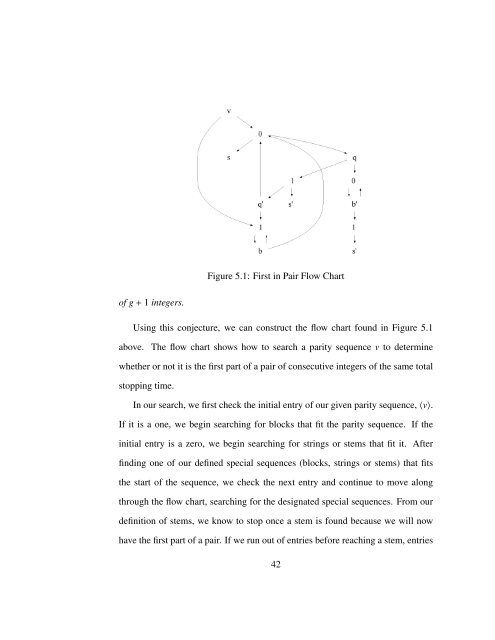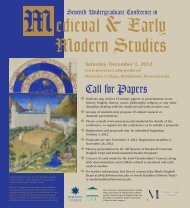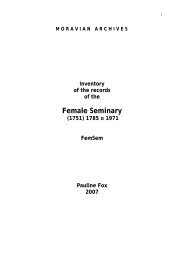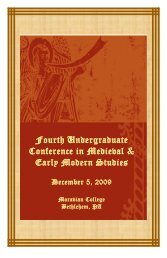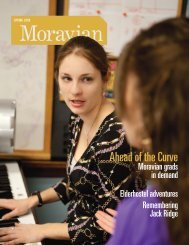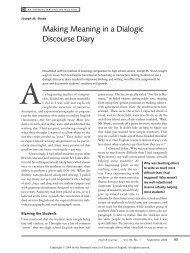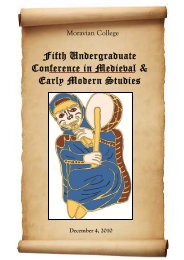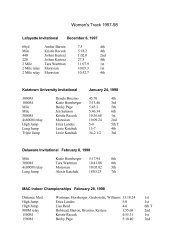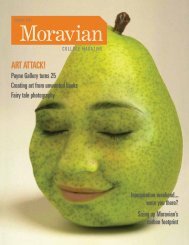Explorations of the Collatz Conjecture - Moravian College
Explorations of the Collatz Conjecture - Moravian College
Explorations of the Collatz Conjecture - Moravian College
You also want an ePaper? Increase the reach of your titles
YUMPU automatically turns print PDFs into web optimized ePapers that Google loves.
Figure 5.1: First in Pair Flow Chart<br />
<strong>of</strong> g + 1 integers.<br />
Using this conjecture, we can construct <strong>the</strong> flow chart found in Figure 5.1<br />
above. The flow chart shows how to search a parity sequence v to determine<br />
whe<strong>the</strong>r or not it is <strong>the</strong> first part <strong>of</strong> a pair <strong>of</strong> consecutive integers <strong>of</strong> <strong>the</strong> same total<br />
stopping time.<br />
In our search, we first check <strong>the</strong> initial entry <strong>of</strong> our given parity sequence, 〈v〉.<br />
If it is a one, we begin searching for blocks that fit <strong>the</strong> parity sequence. If <strong>the</strong><br />
initial entry is a zero, we begin searching for strings or stems that fit it. After<br />
finding one <strong>of</strong> our defined special sequences (blocks, strings or stems) that fits<br />
<strong>the</strong> start <strong>of</strong> <strong>the</strong> sequence, we check <strong>the</strong> next entry and continue to move along<br />
through <strong>the</strong> flow chart, searching for <strong>the</strong> designated special sequences. From our<br />
definition <strong>of</strong> stems, we know to stop once a stem is found because we will now<br />
have <strong>the</strong> first part <strong>of</strong> a pair. If we run out <strong>of</strong> entries before reaching a stem, entries<br />
42


